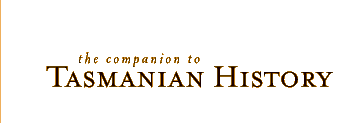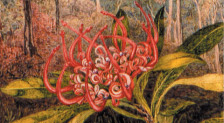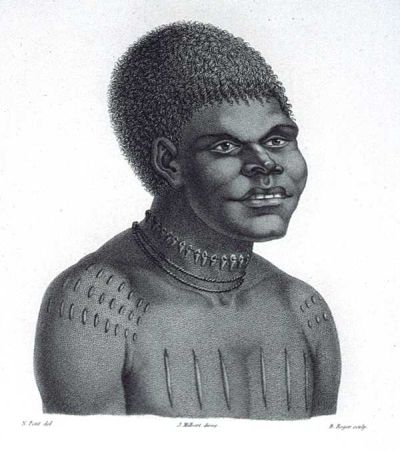 |
 |
|
Aboriginal Art
'Bara-Ourou', drawn by French visitors in about 1803, wears shell necklaces and traditional cicatrices (Tasmaniana Library, SLT) For many Tasmanian Aboriginal artists the continuation of linkages to their country is an intrinsic part of cultural life. Knowledge of place, resources, how and when to collect natural materials are actions of living culture apparent within much Aboriginal art. Relationships are maintained not only to ancestors through transmission of stories and skills but by continuing accompanying responsibilities to living land, salt and fresh waters and all they support. Inspiration from people past is also key to cultural continuity and development. Ancestors have left creative cultural work embedded into rock surfaces; these petroglyphs are located around Tasmania as are hand-prints stencilled across cave and rock shelter walls. Records exist in archival texts and sketches of cultural activities such as codified charcoal designs that narrated everyday events inside hut walls, and cicatrices incised as identifying designs upon our forebears' bodies. Shell necklace work has been sustained for thousands of generations by careful relaying of knowledge and expertise to the present day. Plant fibre basketry and bull kelp water carriers are today rendered in part as homage to forebears and as such are also symbols of survival. Whereas once they were practical carriers of daily resources, today they cannily provide economic return as greatly admired fine art objects. Artists work across a range of natural and human-made materials to diverse outcomes that challenge themselves, community and outsider definitions and expectations of physical, creative renditions of Aboriginal culture. Aboriginal artists today defy labels of 'traditional'‚ or 'contemporary'‚ 'craft'‚ or 'art'‚ by developing unique skills that communicate ideas about culture and country within adoption and adaptation of age-old techniques. Shell, kelp, stone, fibre, wood, bone, sinew, skin and fields including textiles, carving, weaving, drawing, painting, printmaking, photography, design, digital and new media, sculpture, installation, ceramics and carving provide the means for dynamic visual art renditions of cultural, spiritual and personal ties to people and place. Aboriginal people creatively incorporate beliefs into practice and insist that their work has meaning beyond form and memory beyond materials. Cultural knowledge central to Aboriginal identity and survival has been passed on most consistently by living people, generation to generation, in ways and with results broadly termed 'art'. Performed, oral, written and handcrafted cultural expressions including storytelling, song, dance, theatre, poetry, fiction and non-fiction writing and visual arts all provide interfaces not only between Aboriginal people and their past, present and future but offer universal windows into what is significant for the original people of Tasmania. Julie Gough |
Copyright 2006, Centre for Tasmanian Historical Studies |
